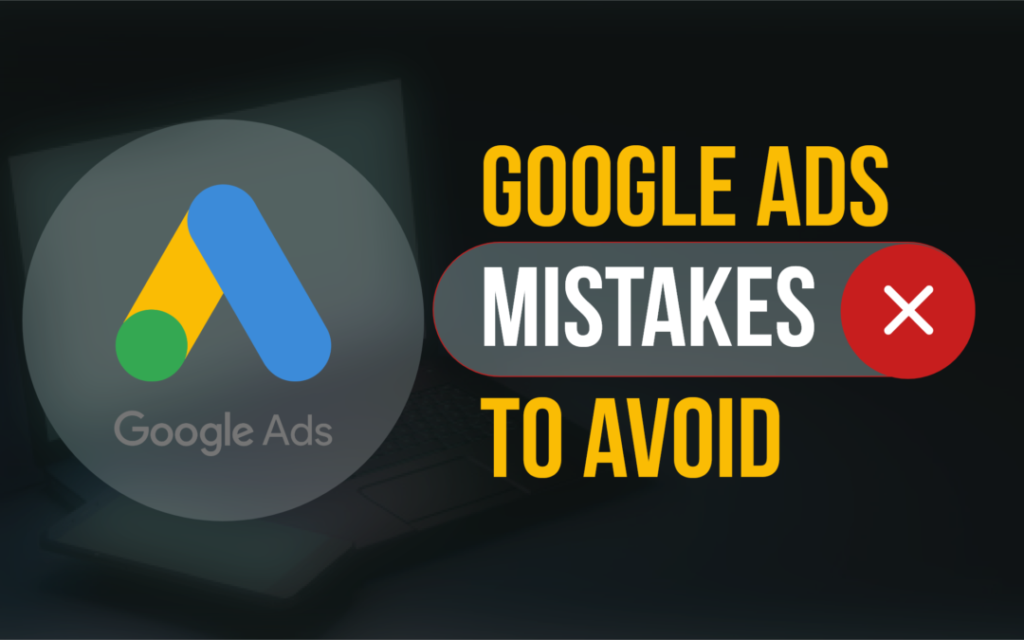Google Ads can be challenging for beginners. Setting an ad campaign is easy, but understanding the platform can take time. We have bought some Google Ads mistakes you should avoid while making an ad campaign.
Google Ads is a powerful advertising platform for search engines, Google Display Network, and YouTube to rank your company. Setting up a Google Ads account is relatively easy. But it can be difficult to master this platform, and even professional advertisers make mistakes.
To increase your spending on Google Ads, we’ve listed popular Google Ads mistakes to avoid.
1. Not optimizing for mobile devices
The use of smartphones has been on the high rise these days, and everyone is addicted to it, but what does it mean for your Google Ads strategy?
According to a recent Google study, 74% of mobile consumers used Google as part of the research process.
93% of those consumers go on to make a purchase (source: Google). Mobile users are quick to convert. Be sure to optimize your ads accordingly.
2. Using wrong match types
Any keywords you have added to your Google Ads account will default to the ‘broad match’ match type unless you choose otherwise.
A ‘broad match keyword’ will trigger far more terms than you perhaps want to show, and you will bring clicks and impressions for queries not as important to your advertising objectives. This will increase your ad spend.
3. Not monitoring search queries and keywords
Google Ads allows you to see the words and phrases that triggered clicks on your ads. To refine the performance of your account, it is necessary to review search terms frequently.
You can find the negative keywords by using the ‘Search Terms Report’ feature, which can be found in the keywords section within your campaign. Identifying negative keywords and adding them to your account is helpful, as this allows you to stop your adverts from appearing for phrases that are not relevant.
4. Not bidding on your brand
Bidding on one’s own brand name has been discussed for a long time, with those who support both sides of the coin.
In our opinion, when initially working out a new campaign for a brand, there should always be a tiny percentage of the total budget allotted to your own branded terms.
Because if people already know your name, they likely are ready to click on your ad, and the last thing you don’t want, as a brand, is to have visitors search your name and to see a competitor’s name show up because they bid on your name when you didn’t.
5. Minimal use of extensions
Most amateurs are aware of the site link extension, which allow people to be taken to particular pages on your site.
It is typically the most common extension that’s displayed, simply because it has the potential to take up the most space. However, there are plenty of ad extensions available for your use. Ad extensions are the features that allow extra business information to be displayed with your ad and make specific actions easier to complete.
This information could be a phone number, address, store rating, or even more webpage links.
6. Not knowing your competitor
Another mistake is not knowing about your competitors, you need to know who you are competing against, which keywords they are using, and their landing pages too.
For this, you need to place yourself in your customer’s shoes and know which ad you are most likely to click on. Check your competitor’s ad copy to see what you can study and apply them. Then browse their landing pages to see how you can improve your pages.
7. Not testing your ad copy
Only having clicked on your ad is not essential; there should be a conversation, and you must accomplish your goal. Therefore, your Google Ads copy needs to be effective. The most important element in managing the Google ad campaign is testing your ad copy.
For testing your Google Ads copy, you need to have at least two to three ad copy variants in your ad group. Create a compelling Google Ads copy by keeping your end goal.
8. Using “Display Select” with search
Selecting this option will allow Google to show your ad on the Google Display Network as well as search networks.
We suggest you not use Search Network With Display Select. Instead, it would be best if you only stuck to Search Network or create two different campaigns, one for Search Network, and one for Display Network only.
9. Not using responsive search ads
Responsive search ads are the new ad format that allows you to input as many as 15 headlines and four descriptions.
Google then automatically tests different variations of ad copy and picks the best performing combinations.
This is much more advanced than regular expanded text ads, which have limited headlines and descriptions. Ultimately, this will help you write the most effective ad, especially once you start to get data about how ads perform for each keyword in your ad groups.
Final Thoughts
Optimizing your campaigns takes effort, but in the long run, it’s worth it. So don’t just set and forget your campaigns.
Want to get better results from Google Ads, but don’t have time to run your campaigns perfectly? Just Get in Touch with us; we’ll help you do it better.
Altois has been recognized as one of the TOP UK Digital Agencies by DesignRush.



